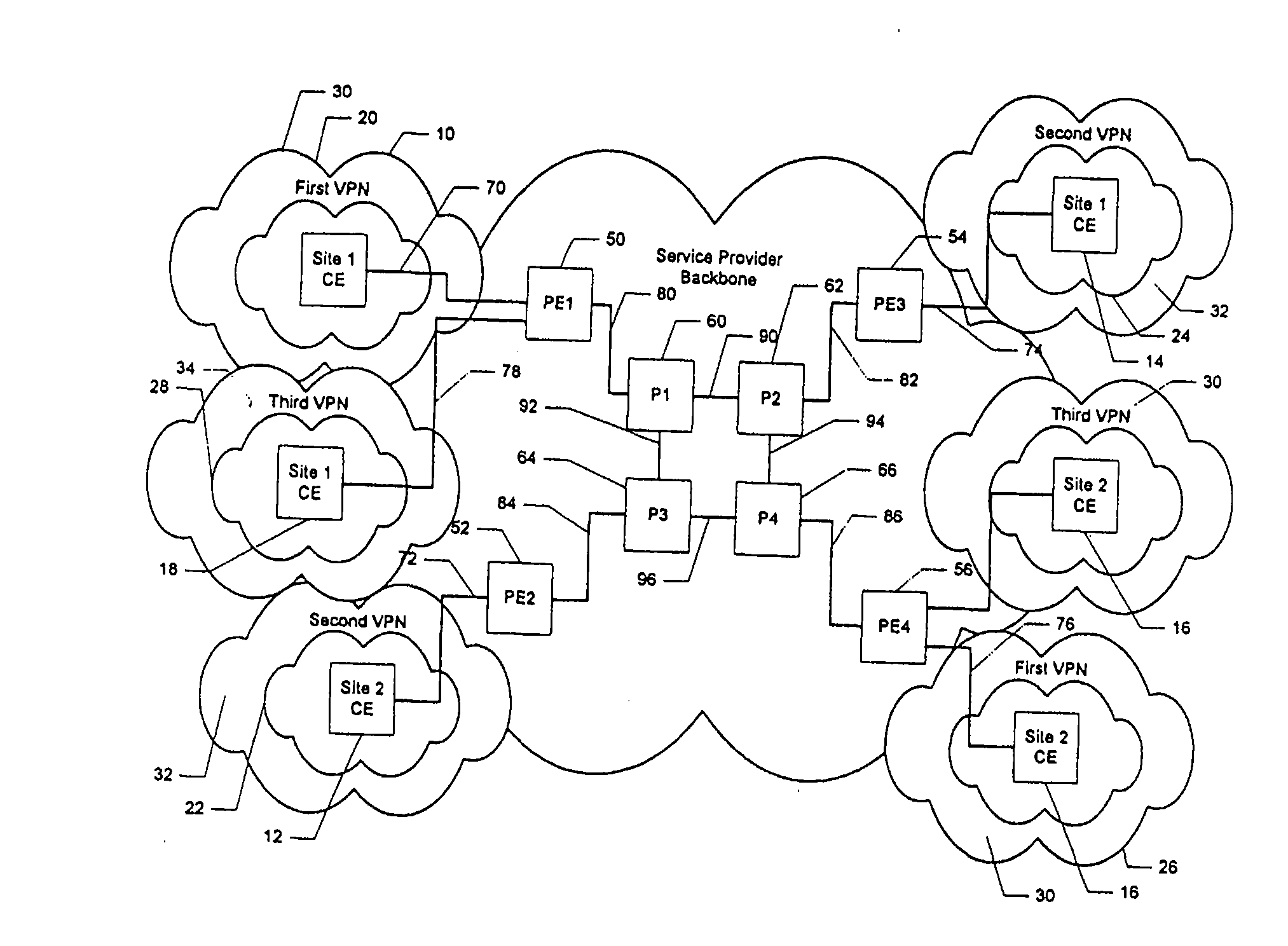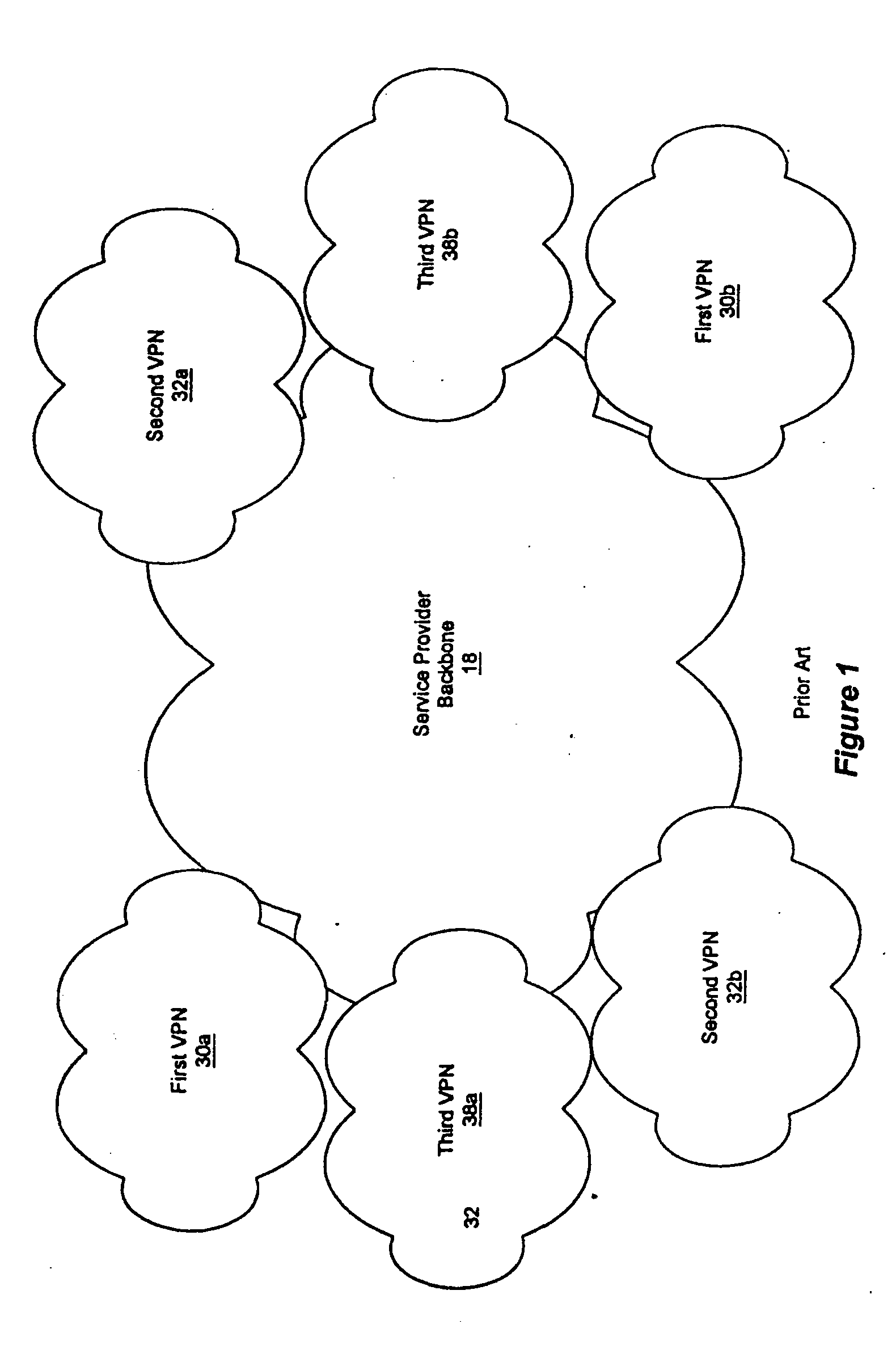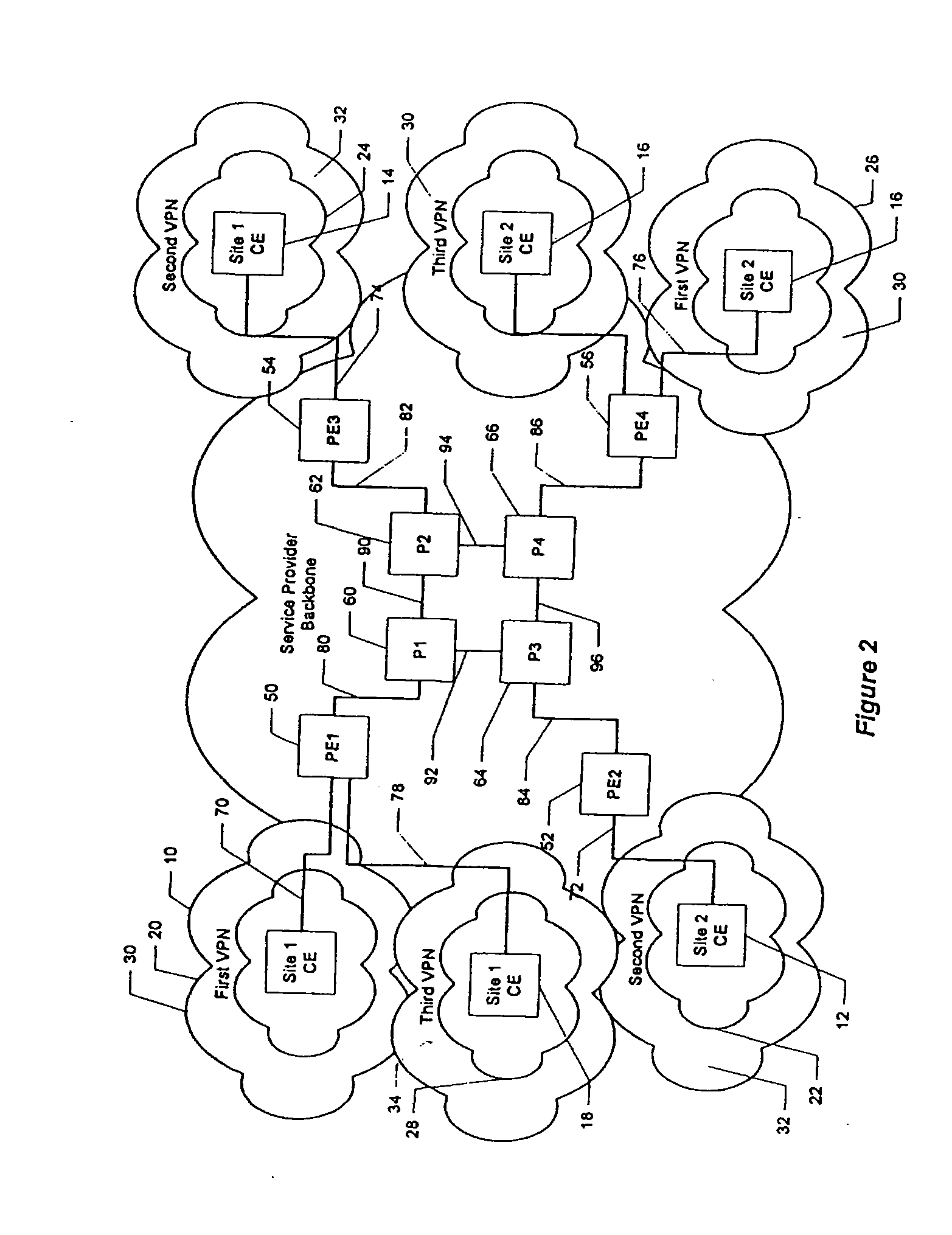Fairness of capacity allocation for an mpls-based VPN
a technology of mpls-based vpn and capacity allocation, which is applied in the field of fairness of capacity allocation for an mpls-based vpn, can solve the problems of network congestion, complain about the quality of calls, and have an effect on real-time traffic,
- Summary
- Abstract
- Description
- Claims
- Application Information
AI Technical Summary
Problems solved by technology
Method used
Image
Examples
Embodiment Construction
[0044] With the foregoing background in mind, it is an object of the present invention to provide a method of fairly allocating capacity among MPLS-based VPNs and for a service provider to offer a guaranteed level of service to a customer.
[0045] RSVP Aggregation is a method to reserve network capacity for a tunnel, to be used by several or many microflows. RSVP is commonly used in coordination with Voice over IP call setup to determine whether there is enough capacity (network resources) for the call. RSVP at the end devices can be used in conjunction with RSVP Aggregation in the PE routers to determine whether there is enough capacity on an LSP to accommodate an additional call.
[0046] Aggregation depends on being able to hide end-to-end RSVP messages from RSVP-capable routers inside the aggregation region. This is easy to do within an LSP tunnel, since the Label Switched Routers (P routers) along the LSP will only observe and act upon the outer labels. When the PE routers act as ...
PUM
 Login to View More
Login to View More Abstract
Description
Claims
Application Information
 Login to View More
Login to View More - R&D
- Intellectual Property
- Life Sciences
- Materials
- Tech Scout
- Unparalleled Data Quality
- Higher Quality Content
- 60% Fewer Hallucinations
Browse by: Latest US Patents, China's latest patents, Technical Efficacy Thesaurus, Application Domain, Technology Topic, Popular Technical Reports.
© 2025 PatSnap. All rights reserved.Legal|Privacy policy|Modern Slavery Act Transparency Statement|Sitemap|About US| Contact US: help@patsnap.com



